What I did on my Summer Break
On rejuvenating your bread baking practice in the classroom
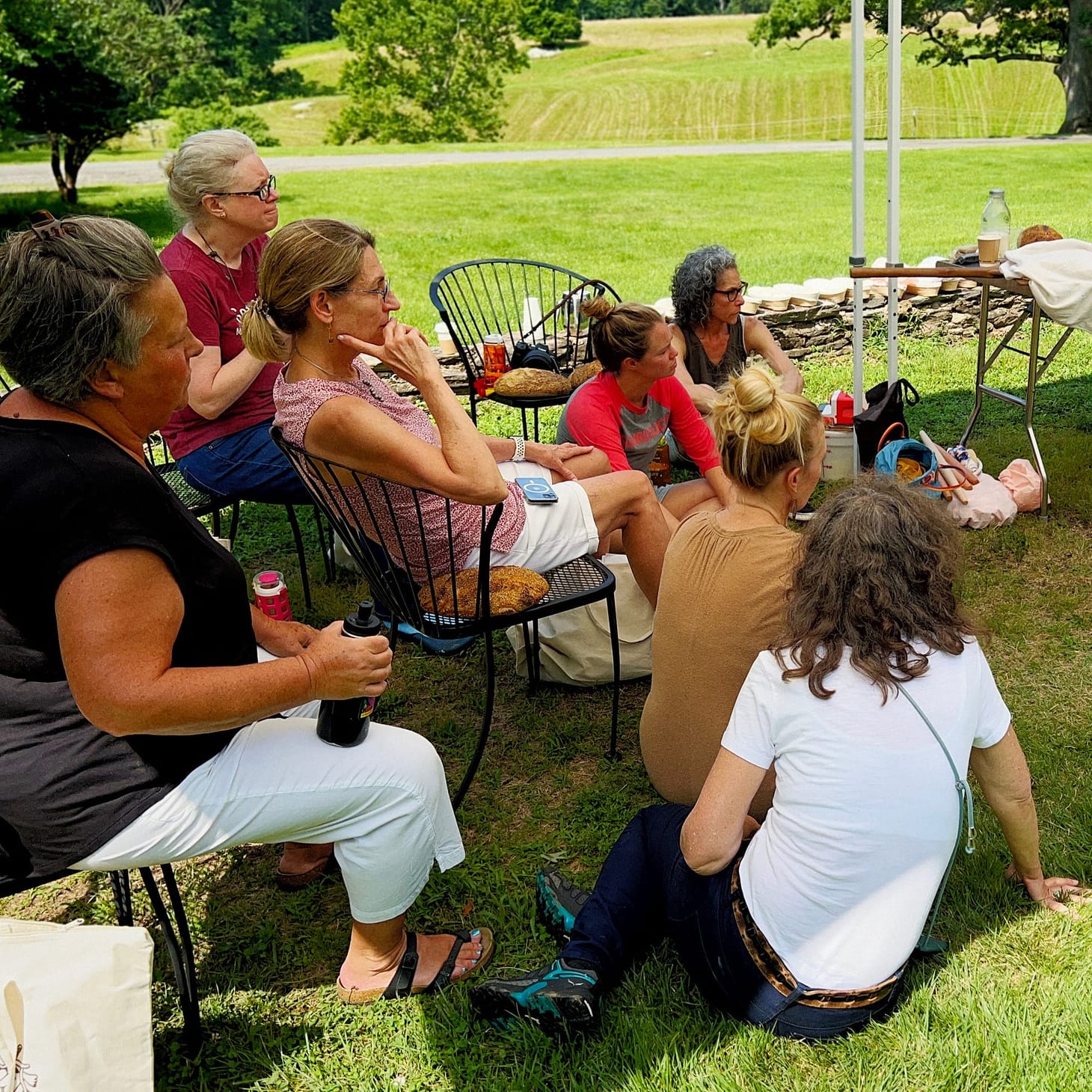
Table of Contents
I’ll be honest: I was a little nervous before heading down to Virginia last week for the Sourdough Bread and Pizza Retreat that Tara Jensen and I were about to teach. Not because I get nervous anymore before teaching—okay, maybe a little in this instance, given that I’d be tag-teaming alongside a sourdough powerhouse like Tara—but rather because it would be only the second time I’d done an in-person class since the start of COVID, and I’d no idea whether I even remembered how!
The good news is that I needn’t have worried; I remembered how, and the class was a smashing success. Tara and I made a great team (note to self: tag-teaching is way more chill than solo), the students were wonderful people, and we all—teachers and students alike—had a ball while learning a ton of new skills and recipes.
Wordloaf is a reader-supported publication. To receive new posts and support my work, consider becoming a free or paid subscriber.
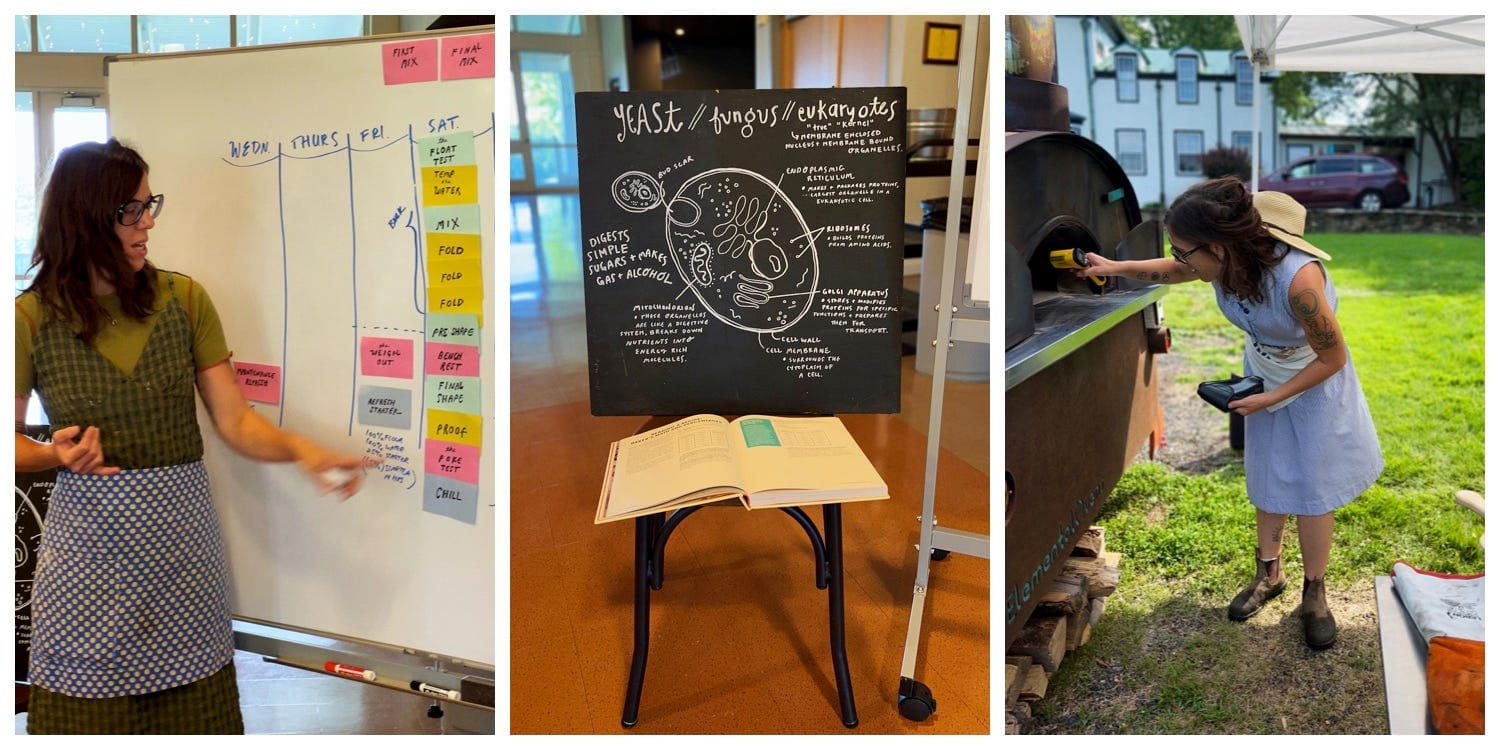
Best of all—for me at least—the intensive, immersive class achieved something I forgot was possible (even though I talked about precisely this when I wrote last year on the joys of the Kneading Conference), and something I hadn’t even realized was needed: A shot in the arm to my own bread baking practice.
Hanging out and working with another baker who does things differently than you do, especially one as experienced as Tara, is a great way to challenge all the assumptions you hold about the “right” way to do things, to remind yourself that sometimes we choose things not because they are the “best” approach, but simply because someone once told us to do it that way. I’m not sure how many of these shifts in my baking will stick, but it’s fun to try them on for size for awhile.
- Water, Water, Everywhere: Like Tara does, I’m now folding my doughs and shaping my loaves on a wet countertop rather than a floured one, at least when it comes to lean doughs (not sure about enriched ones yet). I’d done it before, but resisted making it a regular thing because it seemed like it would make for more of a mess to clean up. But in fact the opposite is true: Once flour absorbs moisture from the dough, it tends to stick to the counter, which requires scraping and/or washing off. Meanwhile, the thin slurry of water and flour that remains after shaping on a wet counter is easily wiped away with a cloth and some warm water. And—more importantly—shaping wet is easy-peasy once you get the hang of keeping your hands and the counter properly moistened. (I use a water mister bottle to spritz everything down.)
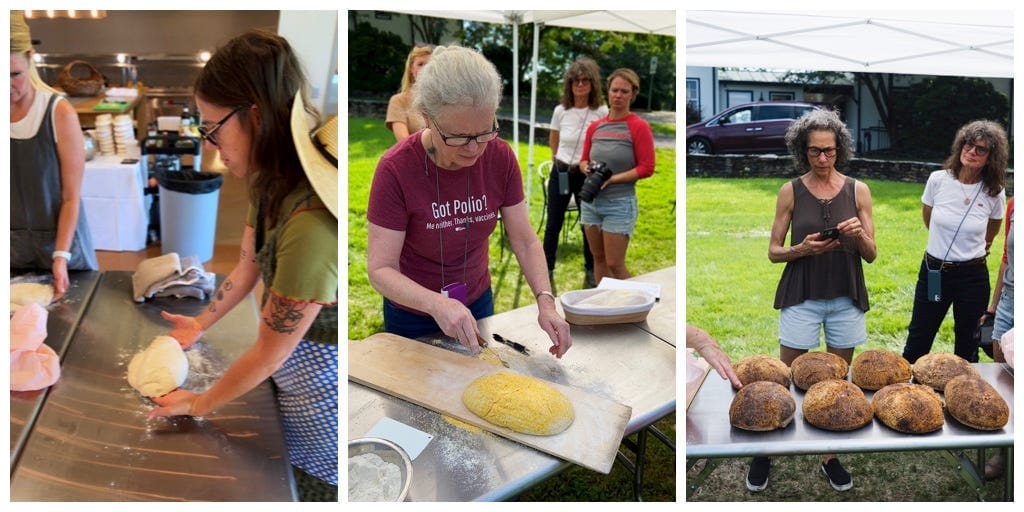
- Rice is nice: I’m also experimenting more with using white or brown rice flour to coat bannetons, shaped loaves, and even pizza and other flatbreads. I’ve generally avoided it because it is so gritty and I didn’t want that grit on the outside of my products. But that grittiness is also the reason rice flour is so resistant to absorbing moisture and thus the most nonstick option for coating doughs (Note: You only use things like rice flour, bran, or semolina at the very end of shaping, not beforehand, or it will definitely get incorporated into the inside of your dough). Plenty of professional bakers & pizza makers do use rice flour, so maybe I’ve been overthinking it: Because it is so nonstick, most of it falls off long before it gets anywhere near your mouth, and the little that remains behind is not particularly noticeable.
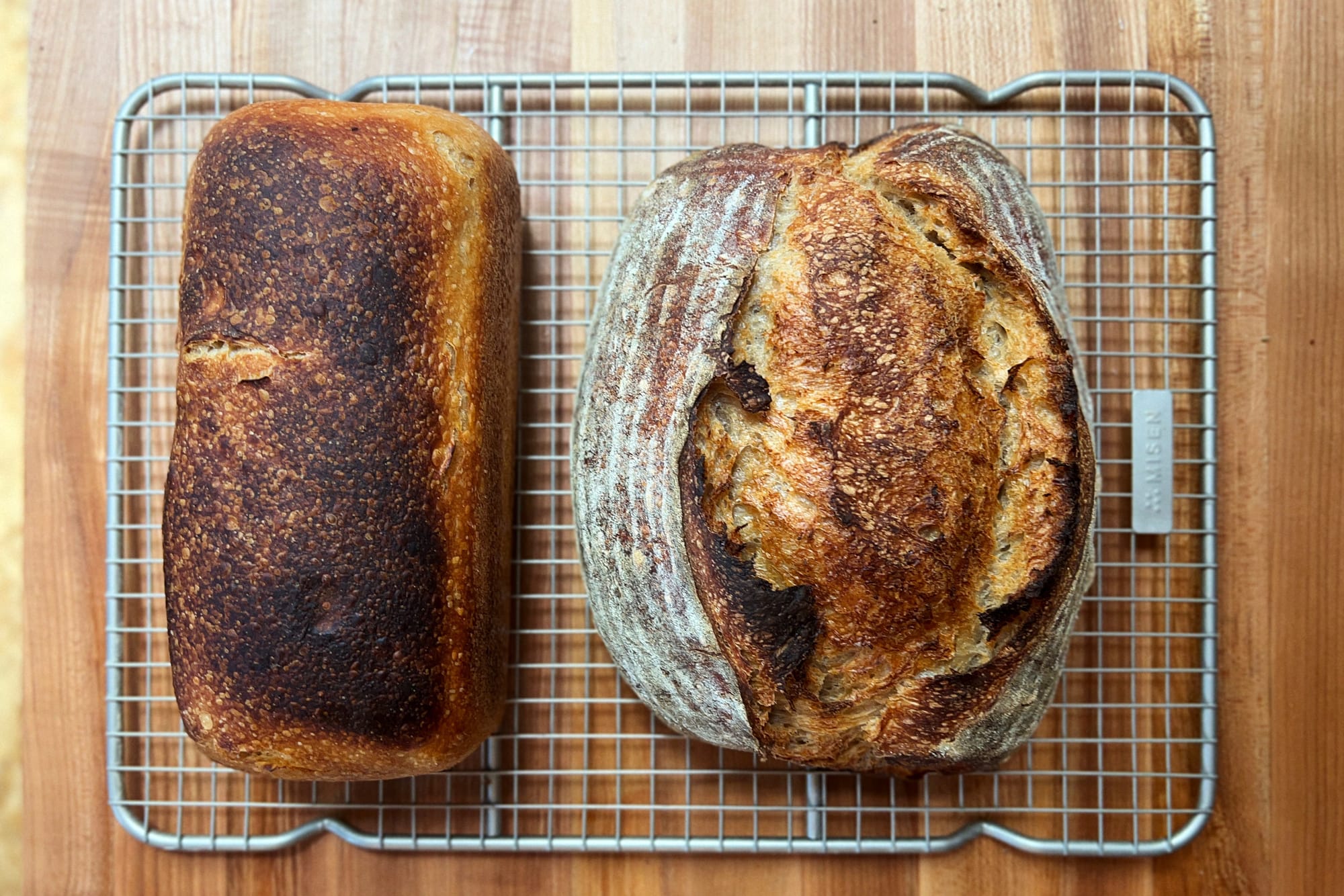
- Bulk it up: In the class, Tara taught two sourdough breads, her “Workweek Bread” a 50/50 whole wheat/bread flour loaf, and “Grits Bread,” a porridge bread containing 50% cooked grits. In the former, she cold-proofs the dough in bulk for 8 to 12 hours, then shapes and proofs it at room temperature before baking. Meanwhile, most of my recipes do a room temperature bulk proof (long or short, depending upon how much levain it contains), followed by a long, cold, shaped proof. Now, I like the convenience of baking straight from the fridge (and think it makes scoring easier), but Tara’s recipe reminded me that there are a million ways to achieve the same basic result. Which is why I’m proofing my breads her way at the moment, including the ones pictured above. (I still might put fully-proofed loaves in the fridge for an hour or two before baking them to firm them up for scoring.)
- Overall confusion: This has less to do with teaching with Tara than simply presenting my recipes to a group of bakers who are unfamiliar with how I normally write them up, but I came away from the class thinking that I need to streamline and simplify how I format them. To that end, I’m going to move the “overall formula” table to the very end of the recipe. I think it is important information to include, but it is for reference and not essential to making the recipe successfully. And it is likely to confound anyone seeing it for the first time.
And that is surely just the start. I’m positive there are many other things I gleaned from the workshop that I haven’t had a chance to reflect upon yet.
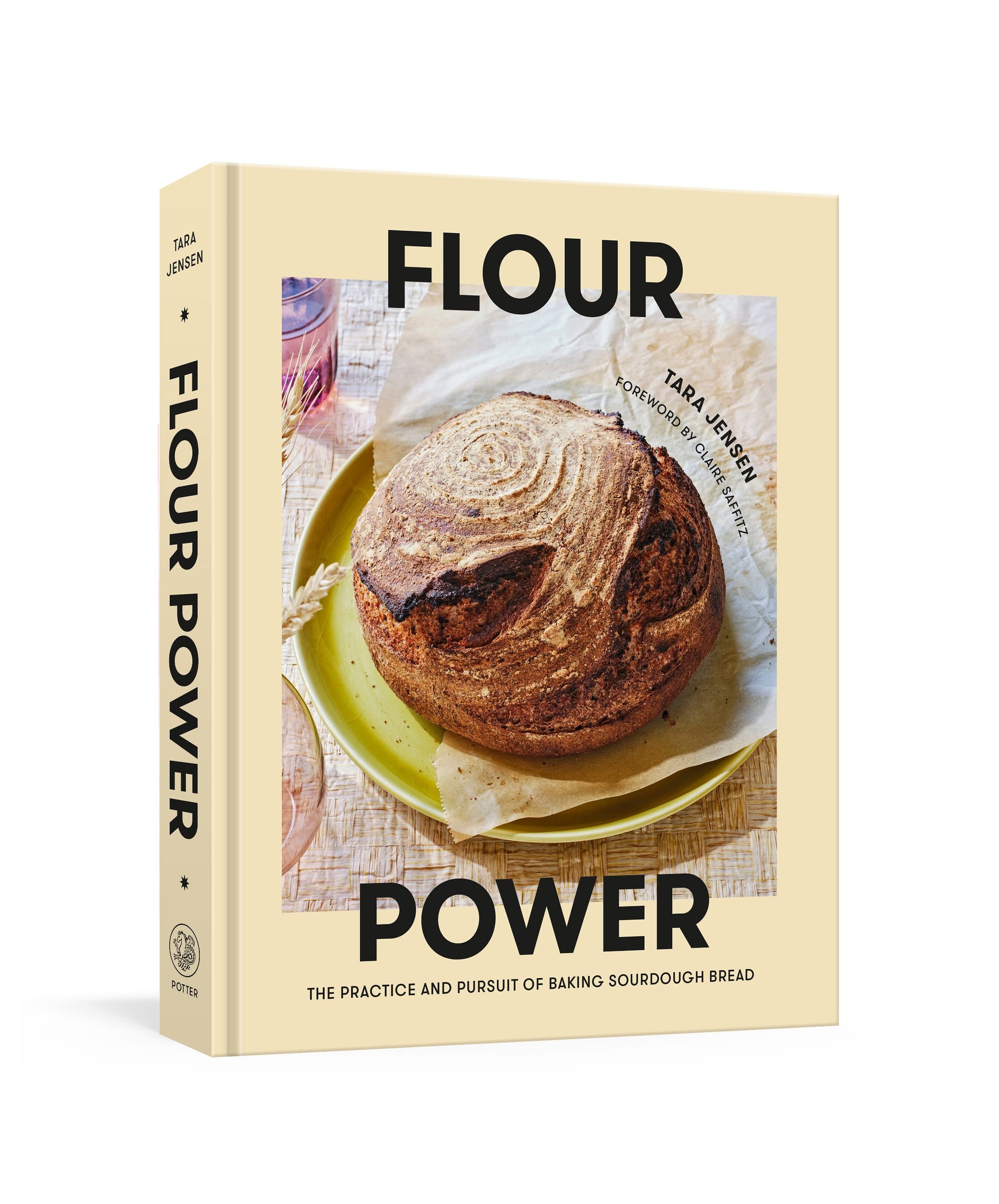
Speaking of Tara and her recipes, did you know that she has a new book coming out next month? I got a sneak-preview of it in the class, and it is SO GOOD. Not only are the recipes great, but it is a beautiful book, filled with sun-drenched photographs of breads and baking technique and whimsical, helpful illustrations. I’ll be sharing excerpts and recipes here once it drops, but that shouldn’t stop you from preordering a copy straightaway.
Also, ICYMI, I shared two other bread-related highlights of my DC trip over on Instagram recently. The first was a visit to the amazing whole-grain, fresh milled-focused Seylou Bakery, with my friend and WaPo food writer Becky Krystal (click through to see a pile of images):
And the second was a trip to Z&Z Manoushé Bakery, in Rockville, MD, where we had some stellar flatbreads and a warm welcome from the Dubanneh family:
(Speaking of manoushé, my Z&Z visit has inspired me to return to my own recipes for the Lebanese flatbread, so stay tuned for a recipe here.) If you are in the DC area, both of these places are definitely worth making time to visit.
—Andrew
Wordloaf is a reader-supported publication. To receive new posts and support my work, consider becoming a free or paid subscriber.
wordloaf Newsletter
Join the newsletter to receive the latest updates in your inbox.




